Key takeaways
- The ability to estimate construction costs accurately is crucial for ensuring fair compensation and maintaining business profitability.
- Construction cost estimates include direct costs, such as labor and materials, and indirect costs, such as permits and overhead.
- There are five main types of construction cost estimates—feasibility, intermediate, preliminary, substantive, and definitive—each used at different project stages to refine cost accuracy.
- Businesses can create accurate estimates using software tools that give them quick access to historical data.
Contracts are a funny thing. No matter how hard parties try to create equal terms, it always proves challenging. And in the world of construction, it’s often the workers left with the short end if things don’t go right. That’s why being able to estimate construction costs accurately is so important. Estimates that are too high could cause you to lose business. However, estimates that are too low might cause you to lose money.
Your ability to estimate construction costs might not be the most important thing, but it’s certainly one of them. An accurate construction cost estimate ultimately dictates whether you receive fair payment. So how do you accurately estimate– and what does construction estimating even entail? Let’s find out!
What is construction estimating?
Also called a building costs estimate, construction estimating is exactly what it sounds like: estimating how much a construction project will cost. Who would have thought?
Jokes aside, though, a lot goes into it, and calculating the right figure is a complex process. You’ll need to account for various things such as labor, shipping, materials, hiring subcontractors, and securing all permits.
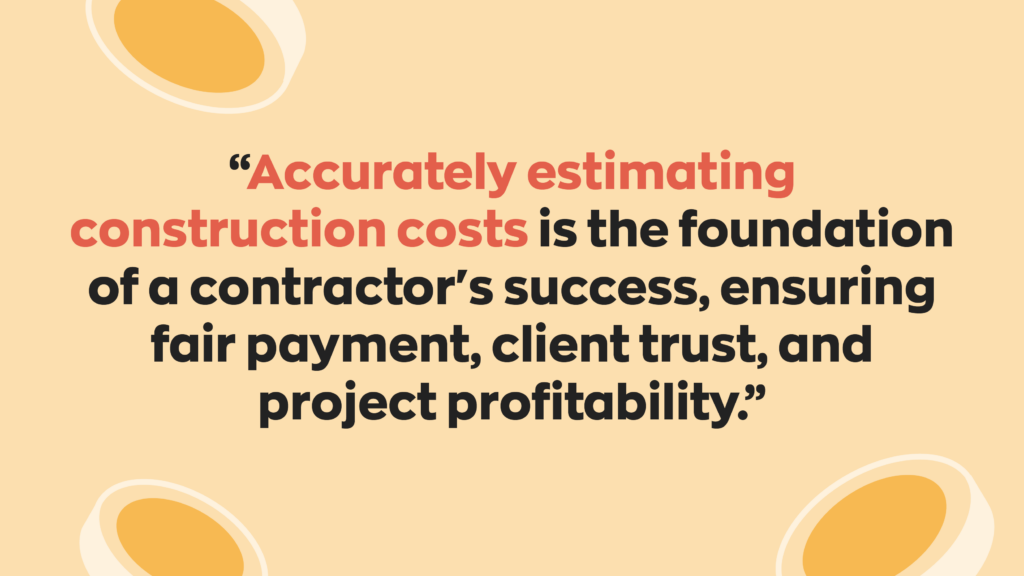
What goes into a construction cost estimate?
We touched on it above, but generally speaking, there are two main types of costs to consider when making a construction cost estimate: direct and indirect. Direct costs are any expenses directly related to a specific project, such as materials and labor. Indirect costs refer to resources spanning multiple projects, such as permits, licenses, marketing, and any other overhead.
Generally speaking, most of the costs that go into any construction cost estimate are the direct costs of material and labor. Accurately estimating these will take a combination of experience and historical data. After all, construction projects are large, expensive, and require workers from various fields, all of which you’ll need to pay a different rate for their work.
The sheer scale presents issues for material acquisition, as well. When buying in literal tons, the cost adds up quickly. Materials are also subject to more frequent price fluctuations. And when working at such a scale, the price difference of a single dollar can equate to tens of thousands.
Why is it important to estimate construction costs accurately?
Providing reliable construction cost estimates can make or break any small business. At first glance, it might seem like an accurate building cost estimate only benefits the client, but that’s not true. Clients often require contractors to add specific clauses to protect themselves from runaway expenses. Which means an accurate estimate is in the best interest of both parties.
Beyond the monetary advantages, accurate estimates will also give your business a reputation for transparency and reliability. This will result in a lot more happy customers who will be more than willing to promote your services. According to a survey by the Joint Center for Housing Studies at Harvard University, about 40-60% of participants said they hired contractors based on referrals.
How do contractors estimate construction costs?
At the end of the day, construction estimating is a complex task that involves many different numbers and calculations. The math itself might be simple, but the number of factors to consider makes it anything but.
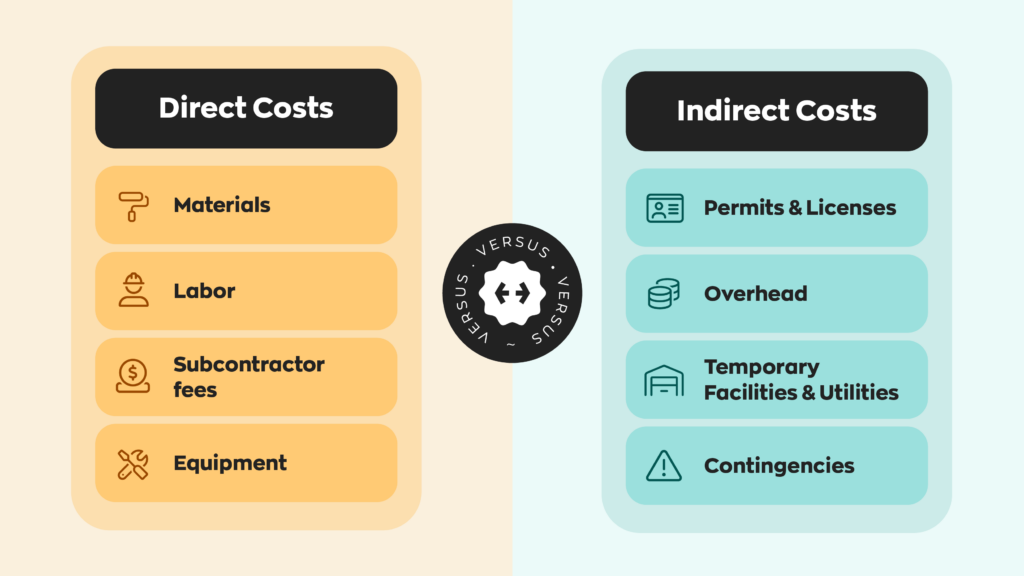
Regardless, it’s important to know what the client wants before making any estimates. If they already have design documents on hand, it’s up to the contractor to create an estimate based on their know-how.
In some cases, though, clients might not have those design documents– so where do contractors go from there? As it turns out, there are a few different ways to estimate construction costs. Let’s examine them to answer this question.
Types of construction estimates
There are many different methods for creating a construction cost estimate. These methods are also subject to tweaks depending on circumstance, but they usually fit one of five estimate types as laid out by the American Society of Professional Estimators (ASPE). Here’s an explanation of what they are and when contractors use them.
Feasibility
Parties develop a feasibility estimate before the project’s true conception. Experts create these based on the cost of similar projects, but they can vary wildly in terms of accuracy. They generally range from -25% to +75% in cost. Feasibility estimates are more concepts than anything and could be based on a list of criteria. Prospective clients use these to determine whether a project is feasible and/or reasonable.
Intermediate
Potential clients use intermediate construction cost estimates to determine whether a project is feasible. While a feasibility estimate serves a similar purpose, intermediate estimates are more in-depth. Like feasibility estimates, large-scale project overseers use them when deciding whether to engage or abandon a project.
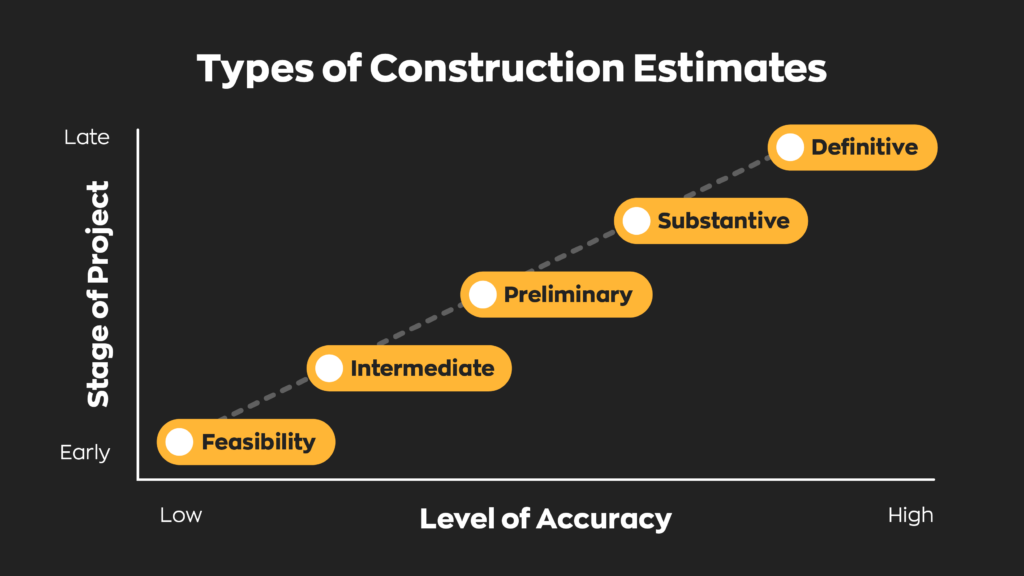
Preliminary
A preliminary building cost estimate is more detailed than both its predecessors. Its purpose is to be accurate enough for funding measures. As such, it’s crucial that preliminary estimates are as accurate as possible.
Substantive
This type of estimation uses unit costs to generate a reasonable final cost. A lot goes into this one: schematics, deliverables, and project objectives. It’s used during the project to manage the budget.
Definitive
You should only create a definitive estimate when all costs are known. Contractors use this type of estimate to place bids on existing projects. While it is the most accurate type of estimate, it may still be susceptible to change due to economic factors.
When do contractors create an estimate?
You might have noticed an escalation of sorts with those estimate types above. That’s no coincidence—instead of setting a price and sticking to it, contractors constantly reevaluate their costs. Depending on the project scale, one price hike could put them in the red. It’s important to keep one eye on cost at all times.
This could be especially relevant depending on the scope or type of project at hand. Building an industrial-grade laboratory will require more expensive and uncommon materials than, say, an apartment building. Materials for such a task may also require special expertise, and be subject to more extreme price fluctuations.
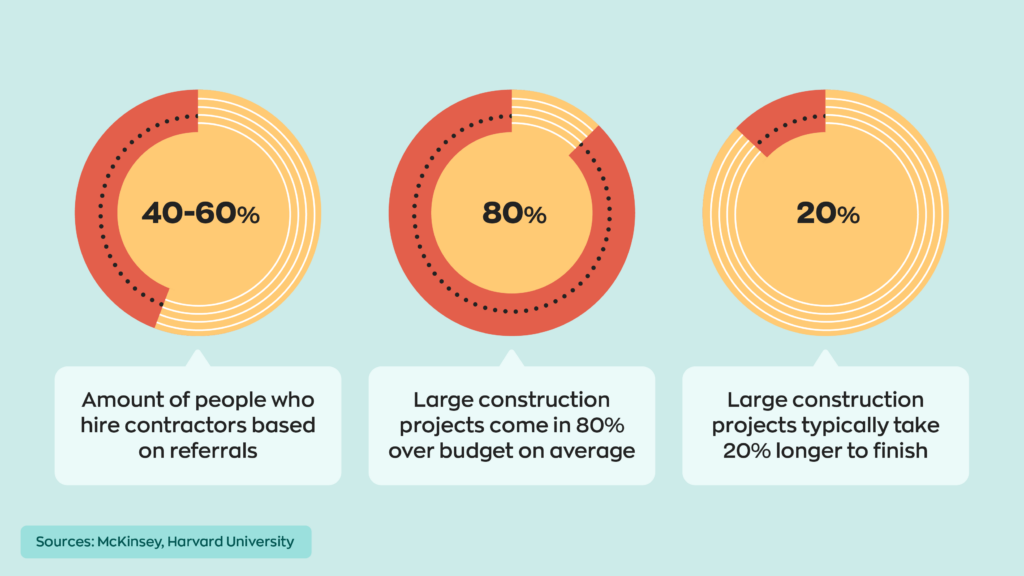
Most contractors will submit a series of building cost estimates at varying stages of the process, each with increasing nuance. So, you may start with a feasibility or intermediate estimate and work up to a definitive one at the client’s request.
How to accurately estimate construction costs
Estimating construction costs confidently takes time and experience. However, some tools and best practices can help guide you.
- Understand the project scope—this might be the most important part of crafting a building cost estimate. Without a complete understanding of the project scope, it would be impossible to provide an accurate estimate. Ask as many questions as possible and study all the available documentation carefully.
- Use historical data and software tools—one of the easiest ways to predict the future is to look to the past. With field service software like inFlow, you can quickly check your historical data through our reporting feature. You can see the components used on similar jobs and what you paid for them.
- Account for contingencies—unforeseen events are bound to happen, so you should always account for these unexpected expenses. Typical contingencies range from 5-10% of the total project.
- Plan for economic factors—with inflation on the rise it’s safe to assume what you pay for materials today will be wildly different from what you’ll pay next year. Be sure to factor this in when you estimate construction costs.
Wrapping up
As the construction industry continues to grow, accurately estimating construction costs is crucial for the success and profitability of any project. It ensures fair compensation and builds a reputation for reliability and transparency. By understanding and applying the various types of construction cost estimates, contractors can provide accurate and reliable projections that benefit both clients and themselves.



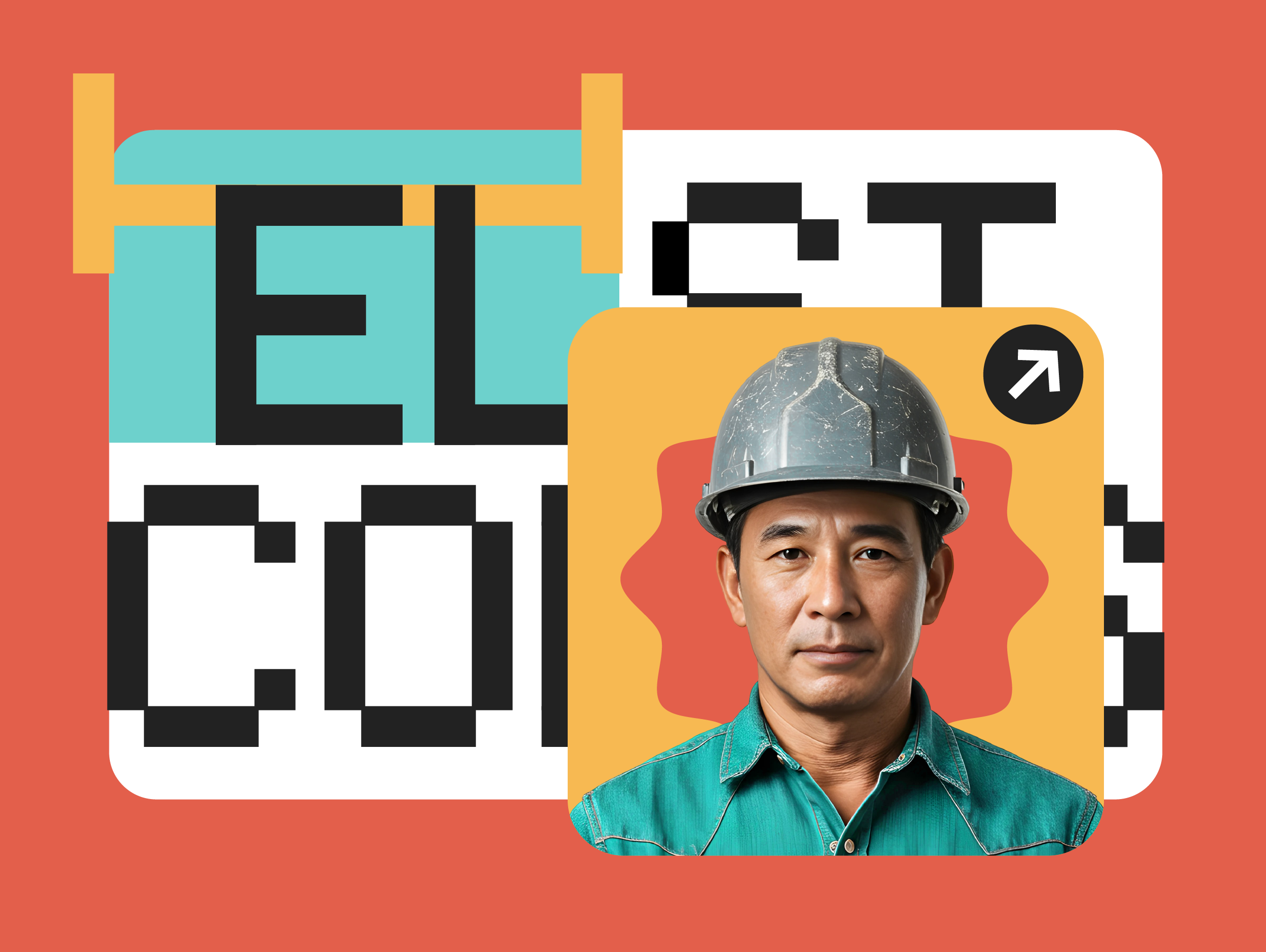
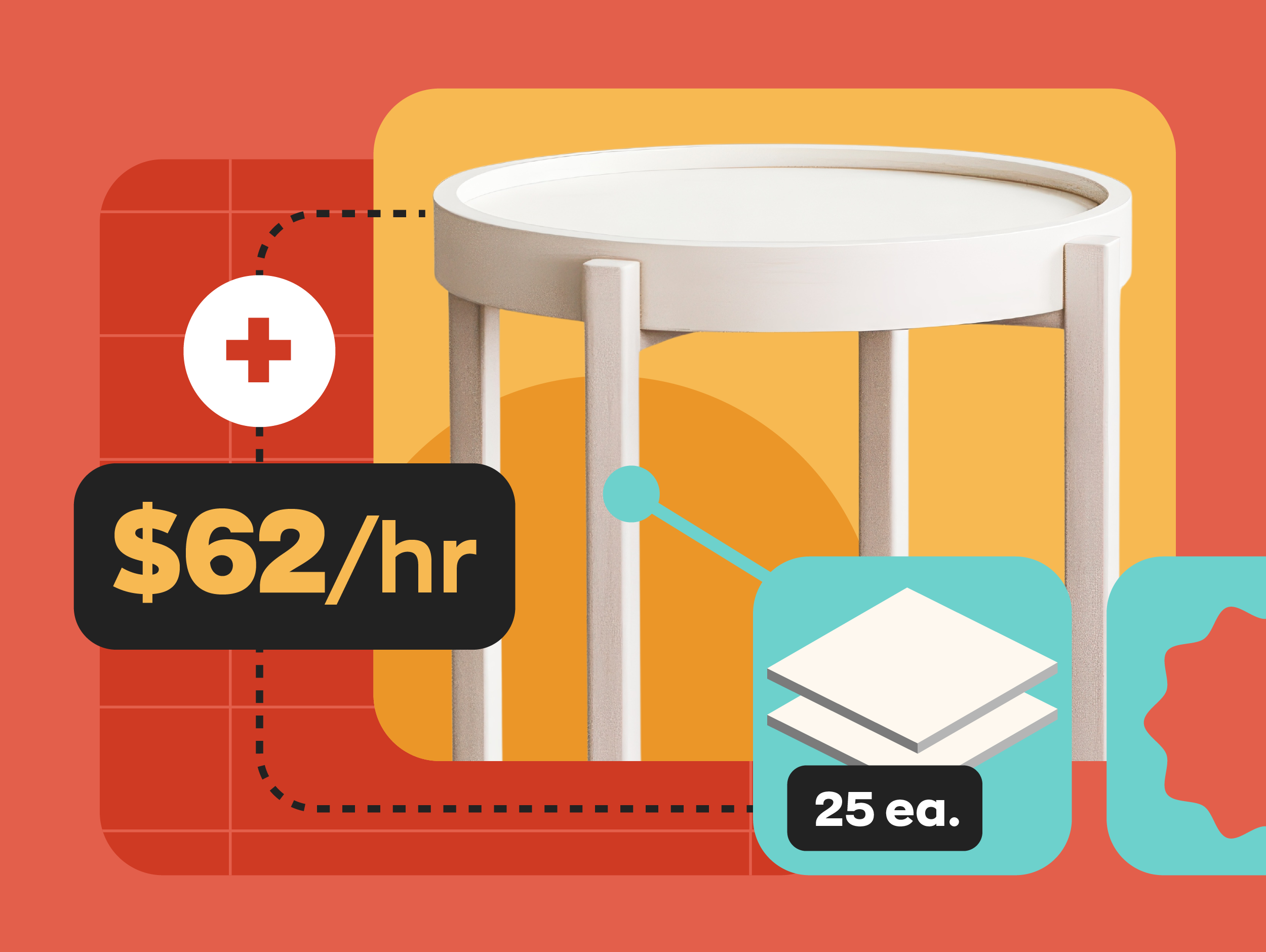

0 Comments